
Looking for How to Freeze Blueberries, Huckleberries, Saskatoons and Aronia Berries, to Use Later in 2025? Scroll down this page and follow the links. And if you bring home some fruit or vegetables and want to can, freeze, make jam, salsa or pickles, see this page for simple, reliable, illustrated canning, freezing or preserving directions. There are plenty of other related resources, click on the resources dropdown above. If you are having a hard time finding canning lids, I've used these, and they're a great price & ship in 2 days.
If you have questions or feedback, please let me know! There are affiliate links on this page. Read our disclosure policy to learn more.
How to Freeze Blueberries, Huckleberries, Saskatoons and Aronia Berries, to Use Later
How to Freeze Blueberries!
(and saskatoons, aronia berries and huckleberries)
Click here for a PDF print version
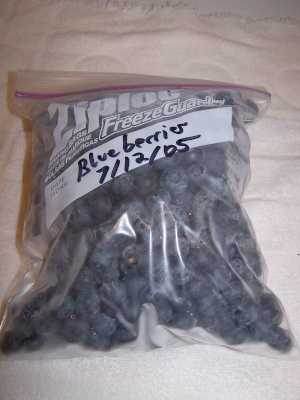 If you like blueberries in the winter, for muffins, pancakes, cobblers,
pies or just in a bowl; just imagine how good it would taste if you had picked a
couple of quarts fresh or bought a them from a farm stand and then quickly froze
them at home! It is also one of the simplest ways to put up a fruit for
the winter. Here's how to do it, complete instructions in easy steps and
completely illustrated. Your own frozen blueberries will taste MUCH better
than anything you've ever had from a store. I'm using blueberries as an example,
but this same process works exactly the same for any other berries listed above.
Strawberries are different in that you must remove the hulls (the green cap)
after washing, but otherwise the same.
If you like blueberries in the winter, for muffins, pancakes, cobblers,
pies or just in a bowl; just imagine how good it would taste if you had picked a
couple of quarts fresh or bought a them from a farm stand and then quickly froze
them at home! It is also one of the simplest ways to put up a fruit for
the winter. Here's how to do it, complete instructions in easy steps and
completely illustrated. Your own frozen blueberries will taste MUCH better
than anything you've ever had from a store. I'm using blueberries as an example,
but this same process works exactly the same for any other berries listed above.
Strawberries are different in that you must remove the hulls (the green cap)
after washing, but otherwise the same.
This also works for cherries, but you may want to pit them before freezing them.
Directions for Freezing Blueberries
Ingredients and Equipment
- fresh berries - any quantity
- Vacuum food sealer or "ziploc" type freezer bags (the freezer bag version is heavier and protects better against freezer burn.
- a pan or tray that will fit in your freezer
- a strainer or colander
Instructions
Step 1 - Get yer blueberries!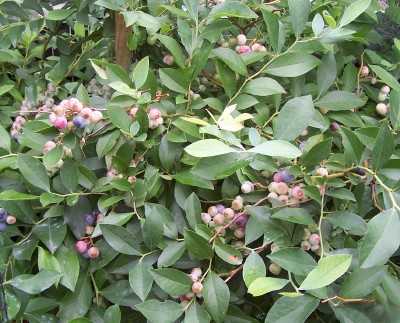
Start with the freshest blueberries you can get. Look for plump,
full blueberries with a good color. I've used blueberries as an example,
but these directions would equally well for any similar berry (saskatoons,
aronia, etc.) See the
picking tips page for other
berries.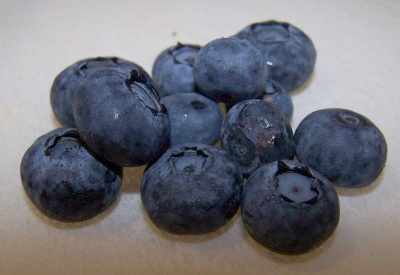
Step 2 - Wash the blueberries? Or not?
According to U.Ga, and
Clemson University extensions, you should not wash blueberries and related
berries (like saskatoons). They say washing results in a tougher skinned
product. They say to wash them after you remove them from the freezer to use.
This only applies to blueberries and saskatoons. For those, just pick the dirt
out, and wash them later when you thaw them Just rinse them gently in cold
water. I put a colander or strainer in a large bowl, fill it with
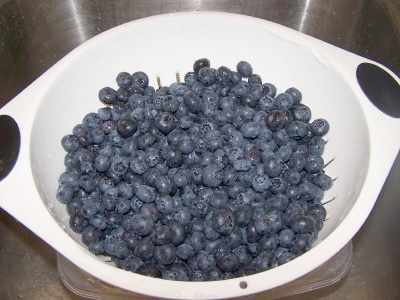 colcold
water and swirl the blueberries in it with my fingers. That avoids
breaking them and dirt either floats, which I pick out, or sinks and is removed
when I lift the strainer out of the bowl.
colcold
water and swirl the blueberries in it with my fingers. That avoids
breaking them and dirt either floats, which I pick out, or sinks and is removed
when I lift the strainer out of the bowl.
As I said, if you plan to use them later in cooking, I haven't found this to be a problem. Since I use the frozen blueberries only to make blueberry pie, blueberry muffins and blueberry pancakes in the dead of winter, the cooking softens them, anyway. But if you plan to use them uncooked after thawing, you might wait to wash them until AFTER you thaw them. If you are going to cook them later, just put them in a big bowl of water to wash and help sort out the blueberries!
If you plan not to wash the blueberries before freezing, you can just swirl them around in a colander or large sieve, to let any dirt particles pass through!
Step 3 - Drain the blueberries
If you washed them, use a large sieve or colander to remove as much water as possible. I usually let them sit for about 10 minutes in the colander
SteStep 4 - Spread the blueberries in a pan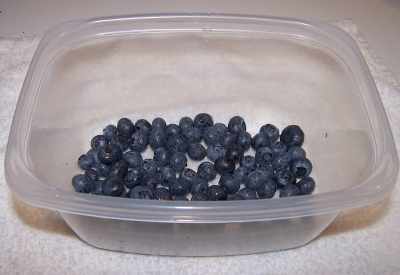
There are two ways of doing this. If you have space in your
freezer, spread the berries out in a large oven pan with a lip or ridge.
Put enough on to make 1 layer. this way they will freeze quickly and
not be frozen together in a lump, so later you can remove only what you need
without thawing the rest.f your freezer isn't that big, just drain as
much of the water as you can, then put them into whatever container will
fit in your freezer. After they are frozen, they may stick together a
little bit, but should break apart fairly easily.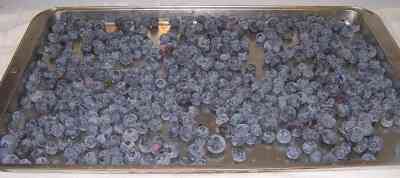
Step 5 - Put them in the freezer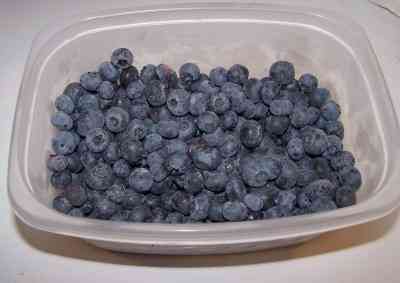
Pop them into the coldest part of the freezer, or the quick freeze shelf, if your freezer has one!
I leave them in the freezer overnight, to get completely frozen.
Step 6 - Bag the blueberries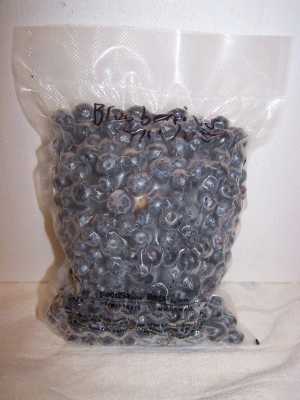
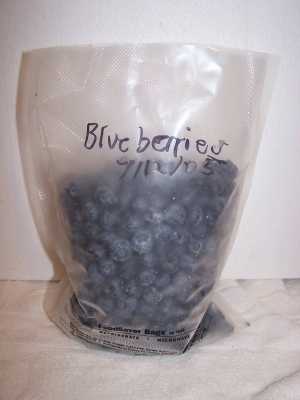
I love the FoodSavers (see this page for more information) with their vacuum sealing! I am not paid by them, but these things really work. If you don't have one, ziploc bags work, too, but it is hard to get as much air out of the bags. remove the air to prevent drying and freezer burn. On the left is the bag with frozen blueberries before vacuum sealing, and to the right is the same bag after vacuum sealing. Of course, you can use ziploc bags (see below), but they leave a lot more air in, which allows some freezer burn.
Note: I typically write the labels on the bags with a Sharpie
permanent marker BEFORE I fill the bags (it's easier) rather than after,
as shown in step 7) tip for a low budget vacuum sealer:
"To "To remove the excess air from a ziploc bag, put a straw inside the
bag and zip it closed as far as possible. Then suck the air out of the
bag, pinch the straw shut where it enters the bag and pull it from the
bag and quickly zip the bag the rest of the way" Of course, you will want to label them with the contents and date, or all
this work could be wasted, if you can't identify them later, or don't know
how old they are. Pop them into the deep freeze, or in the coldest part of your regular
freezer!
Step 7 - Label the bags!
Step 8 - Done!
When you are ready to use the blueberries - Thaw, wash and sort the blueberries.
To thaw them, just set them in the fridge overnight, or on
the counter for a couple of hours. I wouldn't recommend the
microwave unless you are planning to cook with them!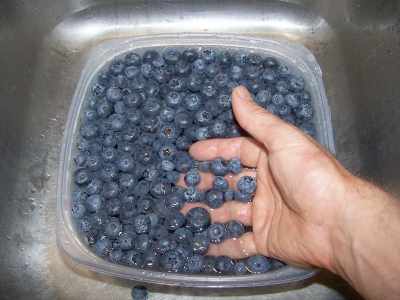
Note (again) about blueberries:
You You can wash the frozen blueberries in a bowl of plain cold water. Then you need to pick out and remove any bits of stems, leaves and soft or mushy blueberries. It is easiest to do this in a large bowl of water and gently run your hands through the blueberries as they float. With your fingers slightly apart, you will easily feel any soft or mushy blueberries get caught in your fingers
Picking Tips:
- Harvest early in the morning, especially if the weather is hot, to get peak flavor.
- HarvHarvest the blueberries at its peak maturity, but not overripe and mushy.
- Process promptly after harvesting, or keep cooled in the fridge or with ice until then.
Picking Tips
[General picking tips and a guide to each fruit and vegetable] [How much do I need to pick? (Yields - how much raw makes how much cooked or frozen)] [Selecting the right varieties to pick] [All about apple varieties - which to pic
k and why!] [Picking tips for Vegetables]
[ Strawberry picking tips]
[ Blueberries picking tips]
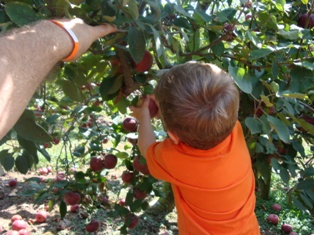
Canning Books, Supplies and Accessories
These are my favorite essential canning tools, books and supplies. I've been using many of these for over 50 years of canning! The ones below on this page are just the sampling of. my preferred tools. but you can find much more detailed and extensive selections on the pages that are linked below.
- Vacuum Foodsealers for freezing, dried foods, and refrigerated foods - the FoodSaver line
- Selecting a KitchenAid mixer and attachments for home canning
- Steam Juicers
- Strainers, pit removers, seed-skin-stem removers, jelly strainers, etc. All types, makes and prices (from $19 to $350)
- Cherry pitters reviews, prices and ordering
- Food dehydrators - easy and fast to dry your own fruits, veggies, sun-dried tomatoes, etc.
The All New Ball Book Of Canning And Preserving: Over 350 of the Best Canned, Jammed, Pickled, and Preserved Recipes Paperback
This is THE book on canning! My grandmother used this book when I was a child.; It tells you in simple instructions how to can almost anything; complete with recipes for jam, jellies, pickles, sauces, canning vegetables, meats, etc.
If it can be canned, this book likely tells you how! Click on the link below for more information and / or to buy (no obligation to buy)The New Ball Blue Book of Canning and Preserving
Canning and Preserving for Dummies by Karen Ward
This is another popular canning book. Click here for more information, reviews, prices for Canning and Preserving For Dummies
Of course, you do not need to buy ANY canning book as I have about 500 canning, freezing, dehydrating and more recipes all online for free, just see Easy Home Canning Directions.
Home Canning Kits
See here for related tools, equipment, supplies on Amazon See here for related tools, equipment, supplies on Amazon
I have several canners, and my favorite is the stainless steel one at right. It is easy to clean and seems like it will last forever. Mine is 10 years old and looks like new.
The black ones are the same type of standard canner that my grandmother used to make everything from applesauce to jams and jellies to tomato and spaghetti sauce.
This complete kit includes everything you need and lasts for years: the canner, jar rack, Jar grabber tongs, lid lifting wand, a plastic funnel, labels, bubble freer, It's much cheaper than buying the items separately. It's only missing the bible of canning, the Ball Blue Book.
You will never need anything else except jars & lids (and the jars are reusable)!
The complete list of canners is on these pages:
- Water bath canners - Good for acidic foods, like applesauce, pickles, salsa, jams, jellies, most fruits
- Pressure canners - needed for low and non-acidic foods, like canned vegetables (corn, green beans, etc), and meats
- Canners for glass top stoves if you have a glass or ceramic stove
- Canners for induction stovetops
Pressure Canners
If you plan on canning non-acidic foods and low acid foods that are not pickled - this means: meats, seafood, soups, green beans corn, most vegetables, etc., then you ABSOLUTELY must use a Pressure Canner.
Of course, you can use a pressure canner as a water bath canner as well - just don't seal it up, so it does not pressurize. This means a Pressure Canner is a 2-in-1 device. With it, you can can almost ANYTHING.
There are also other supplies, accessories, tools and more canners, of different styles, makes and prices, click here!
Basic Canning Accessories
From left to right:
- Jar lifting tongs to pick up hot jars
- Lid sanitizer / lifter - to remove lids from the pot of boiling water (sterilizing )
- Lids- disposable - you may only use them once
- Ring - holds the lids on the jar until after the jars cool - then you remove them, save them and reuse them
- Canning Jar funnel - to fill the jars
FREE Illustrated Canning, Freezing, Jam Instructions and Recipes
Don't spend money on books. that you don't need to. Almost everything you can find in some book sold online or in a store is on my website here for free. Start with theEasy Home Canning Directions below. That is a master list of canning directions which are all based upon the Ball Bblue book, the National Center for Home Food Preservation and other reputable lab tested recipes. Almost every recipe I present in addition to being lab tested com. is in a step by step format with photos for each step and complete. explanations. that tell you how to do it, where to get the supplies and pretty much everything you need to know. In addition, there almost always in a PDF format so you can print them out and use them while you cook.
[ Easy Home Canning Directions]
[FAQs - Answers to common questions and problems]
[Recommended books about home canning, jam making, drying and preserving!]
Looking for canning equipment and supplies?
Water bath canner with a jar rack
Pressure canners for gas, electric and induction stoves: Presto 23Qt or T-fal 22Qt
Canning scoop (this one is PERFECT)
Ball Blue book (most recent version)
Jars: 8oz canning jars for jams
Find Other types of farms:
Farm markets and roadside stands
Road trips and camping resources
Local Honey, apiaries, beekeepers
Consumer fraud and scams information
Home canning supplies at the best prices on the internet!
Maple Syrup Farms, sugarworks, maple syrup festivals
Environmental information and resources
Farms For Your Event for birthday parties, weddings, receptions, business meetings, retreats, etc.
Festivals - local fruit and vegetable festivals
Get the
most recent version of
the Ball Blue Book
With this Presto 23 quart pressure canner and pressure cooker, you can "can" everything, fruits, vegetables, jams, jellies, salsa, applesauce, pickles, even meats, soups, stews. Model 01781

You can make jams, jellies, can fruit, applesauce, salsa and pickles with water bath canners, like this Granite Ware 12-Piece Canner Kit, Jar Rack, Blancher, Colander and 5 piece Canning Tool Set



